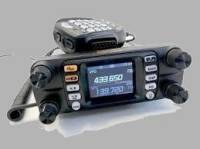|
Click The Radio Image On The Left To Return To Homepage Feel Free To Copy Any Information On The Webpages |
| |
| AB7CQ & W9RIC First Yaesu Fusion DR-2X IMRS LAN Link In North America Between Arizona & Wisconsin
Join Our Digital IMRS LAN Link Network Contact: ab7cq@ebidpal.com
Fusion DR-2X IRMS LAN Linked Repeaters
Fusion IMRS LAN LINKED Repeater
The Tombstone 444.600/449.600 PL100.0 repeater is now IMRS digitally LAN linked and operational between Tombstone, AZ and Appleton, WI.. For information & possible cooperative linking with the Tombstone LAN linked digital repeater system contact AB7CQ at: ab7cq@ebidpal.com
***************************
Yaesu Fusion Digital Transceivers
If You Own a Yaesu Fusion Digital Transceiver & In Range Of Our IMRS LAN Repeater, You're Invited To Use The Repeater. The repeater is currently LAN linked to the W9RIC Appleton, WI repeater.
This page is dedicated to linking of Yaesu DR-2X LAN based IMRS repeaters. One of the new features of the DR-2X repeater is the ability to direct LAN link Fusion repeaters. The beauty of the system is that your repeater club, organization, or as an individual repeater owner, you can now create a wide area coverage system with far less expense. You no longer are required to own a mountain top site, invest in expensive towers, invest large sums of money for remotes, microwave systems, or additional repeaters to become a wide area coverage system. You can LAN link your DR-2X repeater with any other DR-2X IMRS LAN linked repeater(s) eliminating line of sight issues, especially in mountainous or hilly regions.
What's required is a DR-2X repeater which you may have already aquired, the only additional piece of hardware is a Yaesu LAN-01A LAN Unit at a cost of $200 and obviously access to the Internet and linking you're club repeaters, or establishing a linking relationship with other DR-2X repeaters.
Most repeater owners already have a router and have linked or installed a WIRES-X or IRLP node, so expanding your repeater coverage is simply a case of installing the LAN-01A LAN Unit in your DR-2X repeater, and plugging it into your router, most routers have 4 ports available. Some relatively easy router configuration and BINGO, you can LAN link your repeater to other repeaters throughout your area, county, state, USA, and world if you choose. IMRS software and a USB cable come with the LAN-01A Unit, you'll have to provide a LAN cable to connect the repeater to your router. YES, there's always a learning curve, but existing DR-2X repeater owners that are already LAN linked can share infomation with you and help walk you through the installation process.
Your wide area coverage system can be anything from linking a few local repeaters, group linking area repeaters, group linking individual county repeaters, group linking individual state repeaters, and linking repeaters throughout the world. The system has unlimited growth potential.
The AB7CQ/R 70cm Fusion IMRS LAN linked repeater is now operational on the frequency pair of 444.600/449.600 PL100.0. The LAN became operational on 02/14/2018.
A small local area coverage DR-2X repeater with the addition of a LAN-01A Unit can grow to a wide area coverage system without major expense, digital technology has made this possible.
Keep in mind that this is not a "Node System", DR-2X IMRS LAN Linked Repeaters are direct linking systems, they can be individually linked or group linked. As a side benefit, you have outstanding audio and near zero lag time between repeaters on a LAN linked repeater system. Once configured, they don't require a computer.
DR-2X LAN linked repeaters are a direct connection, they do not require being routed through a Japanese server like WIRES-X, unlike WIRES-X there is virtually no lag time on a LAN linked repeater system.
Bob Krueger, AB7CQ Web Administrator 146.920/146.320 PL 123.0 444.600 / 449.600 PL 100 Repeater IRLP Node: 7515 PL 114.8 ab7cqradio@ebidpal.com |
